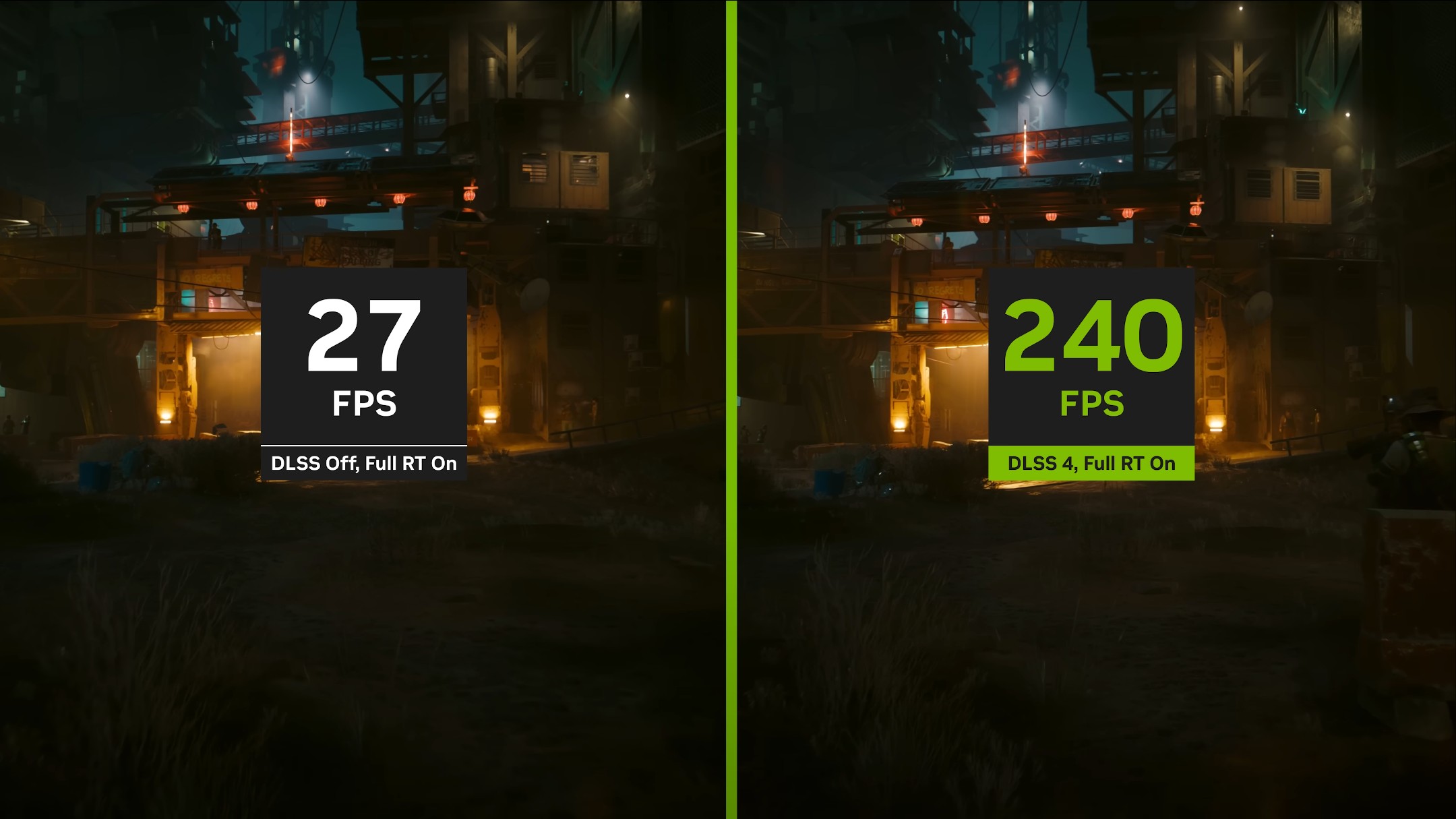The new graphics cards for desktop PCs and graphics chips for notebooks of the NVIDIA GeForce RTX 50xx product family for the consumer market are intended for gamers, creators and developers. Blackwell’s new architecture, fifth-generation tensor cores RT fourth-generation cores deliver a breakthrough in AI-driven rendering, including neural shaders, geometry and lighting.
It is a well-established tradition that NVIDIA brings the highest models to the market first. GPU GeForce RTX 5090 the highest model has 92 billion transistors, providing a computing power of more than 3,352 trillion AI operations per second (TOPS). The innovation of the Blackwell architecture together with DLSS 4 mean that the GeForce RTX 5090 GPU outperforms the GeForce RTX 4090 GPU by up to two times.
GeForce Blackwell comes to notebooks with all the features of desktop models and brings significant improvements in this area, including extraordinary graphics capabilities and remarkable efficiency. The Blackwell generation with NVIDIA Max-Q technology extends battery life by up to 40% and makes it possible to create thin and light notebooks that maintain an elegant design without losing performance or power.
DLSS 4 debuts Multi Frame Generation, which increases frame rate by using AI to generate up to three inter-frames per rendered frame. Also thanks to NVIDIA Reflex technology, it is possible to achieve up to eight times the performance compared to traditional rendering. DLSS 4 brings the PC graphics industry’s first ever application of a real-time transform model architecture. The transformer-based DLSS Ray Reconstruction and Super Resolution models use 2x more parameters and 4x more calculations, ensuring greater stability, reduced ghosting, higher detail and improved anti-aliasing in game scenes. DLSS 4 will be supported in more than 75 games and applications on the day the new graphics cards are released.

NVIDIA Reflex 2 introduces Frame Warp – an innovative technique for reducing latency in games by updating the rendered frame just before it is sent to the display based on the most recent mouse input. Reflex 2 can reduce latency by up to 75%. This gives players a competitive edge in multiplayer games and increases the responsiveness of single player titles.
Rendering of game characters in real time is one of the most challenging graphics tasks, because people are prone to notice even the smallest errors or artifacts in digital people. RTX Neural Faces takes as input a simple raster face and 3D pose data. Using generative AI, it can render a temporally stable, high-quality digital face from it in real time. RTX Neural Faces complement new RTX technologies for ray-tracing hair and skin. Together with the new RTX Mega Geometria, which allows up to a hundred times the ray tracing triangles to be used in a scene, these advancements are poised to deliver a huge leap in the realism of game characters and environments.
NVIDIA introduces a set of new NVIDIA ACE technologies that enable game characters to perceive, plan and act like human players. Autonomous characters powered by ACE technology are integrated into KRAFTON’s PUBG: BATTLEGROUNDS, the same publisher’s upcoming life simulation InZOI, and Wemade Next’s MIR5.
In PUBG, companions powered by NVIDIA ACE technologies can plan and execute strategic actions and dynamically work together with human players to survive. InZOI features Smart Zoi characters that autonomously adjust their behavior based on life goals and in-game events. In MIR5, the bosses of individual raids are controlled by a large-scale language model (LLM) and adapt the tactics of player behavior. Thus, they create more dynamic and demanding
The new graphics cards will of course also be used in AI applications using LLM, visual language models, image generation, speech, embedding models for RAG (retrieval-augmented generation) and computer vision. NIM microservices contain all the necessary components to run AI on a PC and are optimized for deployment on all NVIDIA GPUs.
NVIDIA will provide information on how enthusiasts and developers with RTX family GPUs can use NIM microservices to build AI agents and assistants. It will also release a range of NVIDIA NIM microservices and AI Blueprints for RTX AI PC from top model developers such as Black Forest Labs, Meta, Mistral and Stability.AI. To show how enthusiasts and developers can use NIM to create AI agents and assistants, NVIDIA unveiled Project R2X, a vision-enabled PC avatar that can convey information at the user’s fingertips, assist with desktop applications and video conference calls, read and summarize documents, and provide other services.
The RTX 50 series GPUs are the first consumer market GPUs to support FP4 precision, doubling AI image generation performance for models like FLUX. This allows the generative AI model to run locally with lower memory requirements compared to previous generation hardware.
The NVIDIA Broadcast application has been expanded with two beta versions of AI-powered live broadcasting features: Studio Voice, which improves the sound from the microphone, and Virtual Key light, which improves the lighting of the face for better streams. Streamlabs introduces an intelligent streaming assistant, powered by NVIDIA ACE and Inworld AI technologies, that acts as a co-host, producer and technical assistant to enhance live broadcasts.
The GeForce RTX 5090 GPU with 3352 AI TOPS and the GeForce RTX 5080 GPU with 1801 AI TOPS will be available for desktop PC owners from January 30 for €2389 and €1199, respectively.
The GeForce RTX 5070 Ti GPU with 1,406 AI TOPS and the GeForce RTX 5070 GPU with 988 AI TOPS will be available during February for €899 and €659, respectively.
The NVIDIA GeForce RTX 5090, RTX 5080 and RTX 5070 Founders Edition GPUs will be available directly on nvidia.com and at select retailers worldwide.
Notebooks with GeForce RTX 5090, RTX 5080 and RTX 5070 Ti Laptop GPUs will be available from March and RTX 5070 Laptop graphics cards will be available from April from the world’s leading manufacturers
Source: www.nextech.sk


